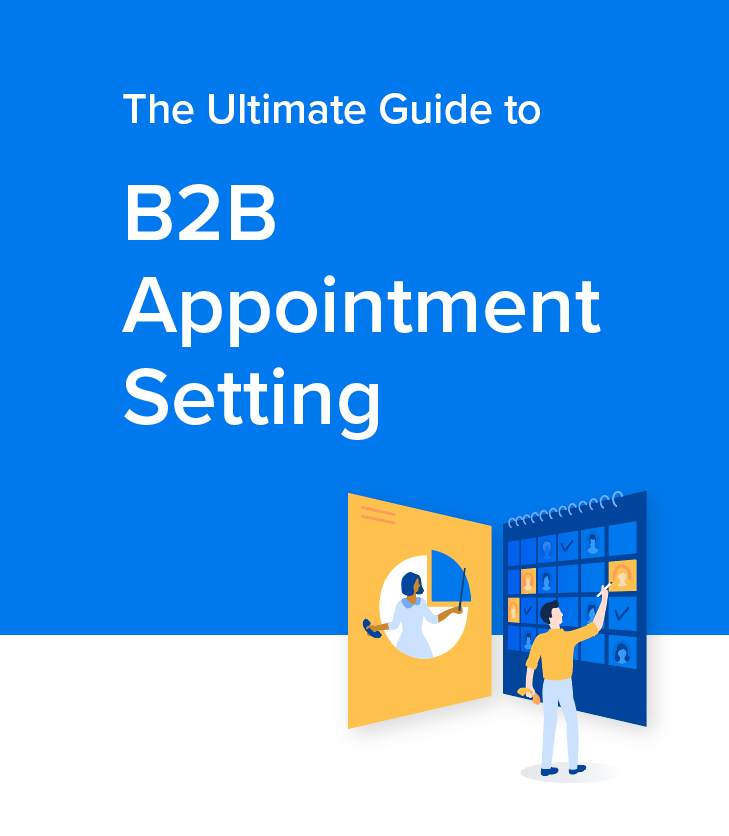Connect with a Consultant
Fill out your information with the form provided and one of our team members will reach out to you shortly.

This post was originally published in July 2018 and has been updated for accuracy and comprehensiveness.
At this stage, your sales development team is ready to hit the ground running. Now comes the tricky part: how to qualify a lead.
A standardized lead qualification system allows you to accurately gauge your prospect’s level of interest. That way, your SDRs know which prospects to prioritize in their prospecting efforts.
In this chapter, we’ll go over EBQ’s proven lead qualification system and the benefits of using a standardized lead qualification system.
A lead qualification system is a numeric point system assigned to each prospect to estimate how close they are to closing. At EBQ, we’ve developed our own lead qualification system.
The EBQ Rating is more granular than traditional lead qualification systems, as it provides greater visibility and relevancy. This allows for effective segmentation and provides more context to your sales team.

Every new prospect enters a database and is scored a “7.” The closer a prospect is to a “0,” the closer your SDRs are to setting a sales appointment.
Your sales and marketing team can disqualify a prospect manually and give an explicit reason for their unfitness. For example, you can rate a prospect a “10” if their company is outside of your service area.


There are three key benefits to using a lead qualification system:
Part of lead generation success is integrating marketing with your sales development efforts. That way, you can automate some of the touchpoints — leaving SDRs room to prospect.
Using a marketing automation system, you can create a smart logic email campaign that responds to the prospects’ actions. For example, you can create a nurture series to continue to warm up prospect leads by sending relevant and personalized content.
If you’d like to see these marketing automation email campaigns in action, check out our Beginner’s Guide to Pardot (now known as Marketing Cloud Account Engagement). We outline how to segment audiences based on their lead scores and utilize marketing automation to effectively connect with each prospect.
As mentioned earlier, a lead qualification system is a great way to identify interested prospects. From there, you can accurately measure sales pipeline activity to project sales growth.
For example, let’s say that a client has a database of 10,000 cold prospects and they hire EBQ to qualify the prospect database. EBQ then identifies 300 interested leads after their calling efforts, all with an ASP of 50,000 and an average closing rate of 20%. As a result, the company would be able to make a case for $3,000,000 in additional revenue in the pipeline to the venture capitalist.
Of course, this is heavily dependent on the quality of your database. If you purchase bad leads, it can cost your organization upwards of $100 per bad lead. Before you choose which data company to partner with, you need to evaluate contact databases critically to prevent bad leads from clogging up your sales pipeline.
Earlier, we mentioned how you can use the EBQ Rating to manually disqualify a prospect and add notes on their unfitness. But where do you store these notes?
We highly recommend you invest in a robust customer relationship management (CRM) instance like Salesforce. That way, each team can use the same customer data to inform their department’s efforts.
In Salesforce, you can use a custom field to record comments about a prospect’s level of interest. That way, your sales team can get as much information upfront as possible before reaching out to a prospect.
If you have a CRM platform and want to maximize your ROI, contact one of our certified CRM experts. With over 900 projects under our belts, we know how to incorporate CRM best practices with your unique business needs to create a custom solution that works for you.

Don’t have time to read the full guide right now? Download the Ultimate Guide to B2B Appointment Setting to read at your convenience.
In this chapter, we explored the EBQ Rating and dove into the benefits of implementing a lead qualification system. However, a lead qualification system is only as strong as your lead generation team.
If you want to grow your sales pipeline, consider partnering with our outsourced lead generation team. At a fraction of the cost of hiring internally, we can prospect, nurture, and follow up on your leads for you. Better yet, we use our proven processes and seamlessly integrate them with your business — empowering you to accelerate your sales and marketing efforts.
Fill out your information with the form provided and one of our team members will reach out to you shortly.
6800 Burleson Road
Building 310, Suite 265
Austin, TX 78744
©EBQ 2023 All rights reserved.
Tell us about yourself and we’ll get in touch shortly.
